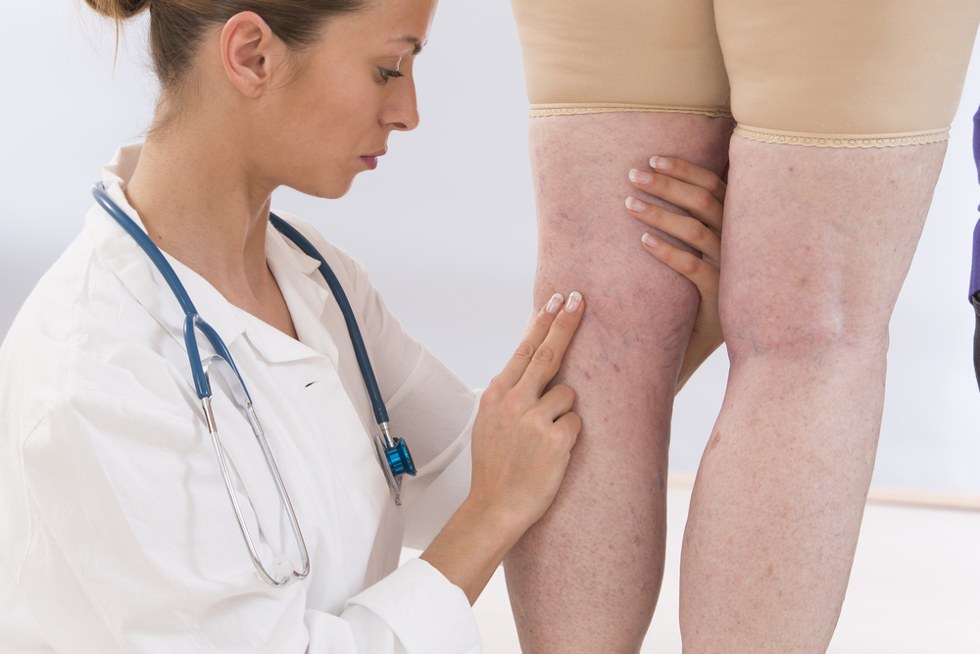What is Post Operative Care?
Published on: 3 May 2019
Mr Debashis Ghosh
NHS Consultant
GMC Number: 4657664

Medically reviewed by a licensed NHS consultant
Last updated: 15/08/2019Get Free & Simple Pricing, Procedure & After Care Information from a Licensed Consultant Now

Photo credit: ldutko / Shutterstock
Post operative care, also known as post-op care, is the care you receive after you have been in a surgical procedure. How much and how extensive your post-op care is dependent on which type of surgery you have, as well as your health history.
Post-op care begins immediately after you have had your surgery. It lasts for the duration of the time you spend at hospital and may continue after you’ve been discharged. During this time, it is important to look out for any possible side effects or complications that may occur. Be vigilant and if there are any problems, get in touch with your nurse or surgeon as soon as possible.
What is a post operative care plan?
Before your surgery begins, it is advisable to ask your nurse what your postoperative care will involve. This includes how long you may be staying in hospital, and when you go home, what kind of care you will need; this gives you time to prepare beforehand.
Some questions you may want to ask your nurse include:
- How long will I be in hospital for?
- Will I need any specific supplies at home, such as medication?
- Will I need a carer or physio?
- What are the side effects?
- What complications should I watch out for?
- What should/shouldn’t I do during my recovery?
- When can I resume normal activity?
Depending on the type of surgery you have, there are many potential complications that can happen. Some surgeries are at risk of infection, bleeding and blood clots, so postoperative care is vitally important. The period of time you spend inactive can also cause you to lose some of your muscle strength and develop respiratory complications.
Post operative care per cosmetic procedure
Read on to find out more about the post operative care you must follow for the following common cosmetic surgery procedures:
- Breast enlargement
- Breast Reduction
- Abdominoplasty (Tummy tuck)
- Liposuction
- Rhinoplasty (Nose surgery)
- Otoplasty (Ear surgery)
- Rhytidectomy (Facelift)
- Blepharoplasty (Eyelid surgery)
- Labiaplasty
- Sclerotherapy (Varicose veins)
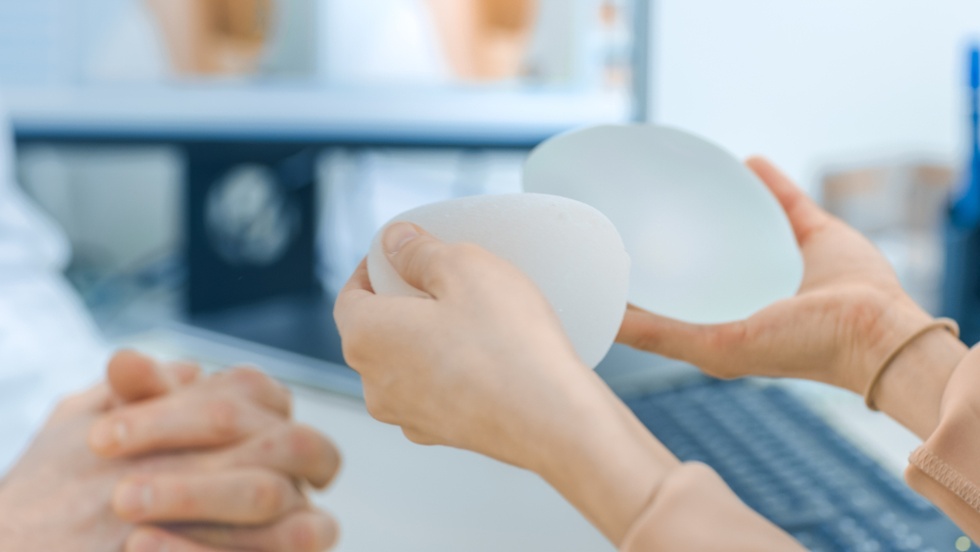
Photo credit: Gorodenkoff / Shutterstock
This procedure entails a patient inserting implants into their breasts to increase the size, change their shape or to make them more even. The operation includes making an incision next to or under the breast, positioning the implant and stitching up the incision.
Post-op guidelines
- You must wear a sports bra continuously for 6 weeks post-surgery. This is an important part of the healing process.
- You will feel some discomfort. Your nurse will prescribe some pain relief for you.
- There may be some fluid leakage at first, but this is normal. If you are concerned, get in touch with your nurse as soon as possible.
- You should have your wound checked after 7 days, to check it is healing correctly. Most stitches are dissolvable, however any that may need removing should be done at your post-op appointment.
- You must not drive for at least one week following your surgery.
- You must not have a shower or bath after surgery unless instructed to by your nurse.
- Be careful not to overdo it, otherwise you may undo the healing that has already happened.
- Avoid getting the wound wet, as this may lead to an infection.
- Do not take any medication containing aspirin for at least week following surgery.
- The incisions must be protected from sunlight and UV rays for the first 12 months using an SPF 25+.
- The breast may be swollen and feel hard at first, but this is normal and expected. You may also have little sensation to the entire or part of the breast including the incision and nipple area, again this is normal.
- Avoid strenuous exercise or heavy lifting for 6 weeks following surgery.
- Massage is extremely important following surgery and is generally commenced 5 – 7 days following the operation please follow the surgeons and nurse’s instructions for this.
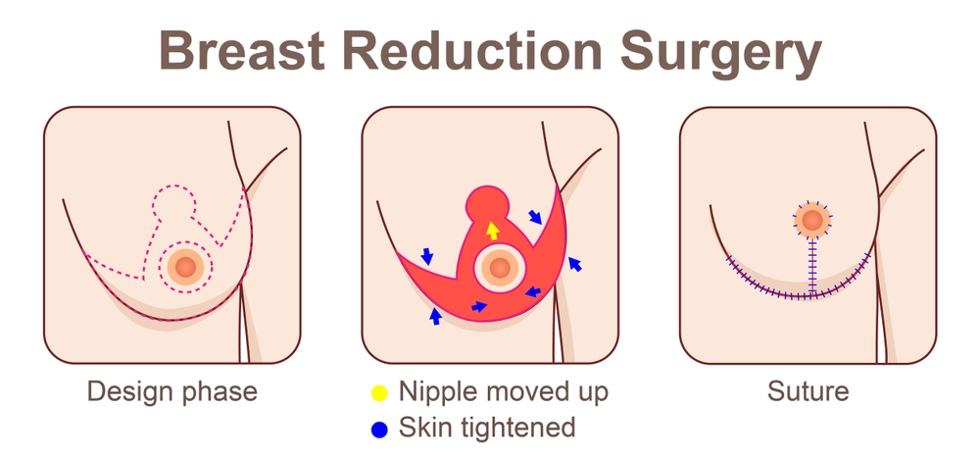
Photo credit: CHEN I CHUN / Shutterstock
This procedure entails a patient to make their breasts smaller, less heavy and more lifted. This may be their natural breasts or even the removal of previous breast implants. The operation includes removing excess fat, tissue and skin, and reshaping the remaining breast tissue before moving your nipple to its new position.
Post-op guidelines
- You will need to wear a sports bra continuously to aid the healing process. You must not remove this until your post-op appointment, at least.
- After the operation you may feel some discomfort. Ensure you have painkillers.
- You may find you have some fluid leakage to begin with – this is normal. If you are concerned about how much liquid, consult your nurse.
- You should have a wound check around a week after your procedure to check the healing process. Most stitches used are dissolvable, but if any need to be removed, this can be done by a nurse at a post-op appointment.
- You will be unable to drive for 2 weeks after your surgery.
- Movements will be restricted in the weeks following your surgery, so be careful not to over-do it.
- Avoid getting the wound wet, to avoid any infection. This includes bathing or having a shower, until you are instructed to do so by your nurse.
- Do not take any medication containing aspirin 1 week following surgery.
- Your incisions must be protected from sunlight and UV rays for at least 12 months after your surgery. It is advisable to use SPF 25+ when exposed to sun.
- It is normal for your breast to feel hard and swollen, and you may feel altered sensation around the incision and nipple area.
- Avoid any strenuous exercise or heavy lifting for at least 6 weeks following your surgery.
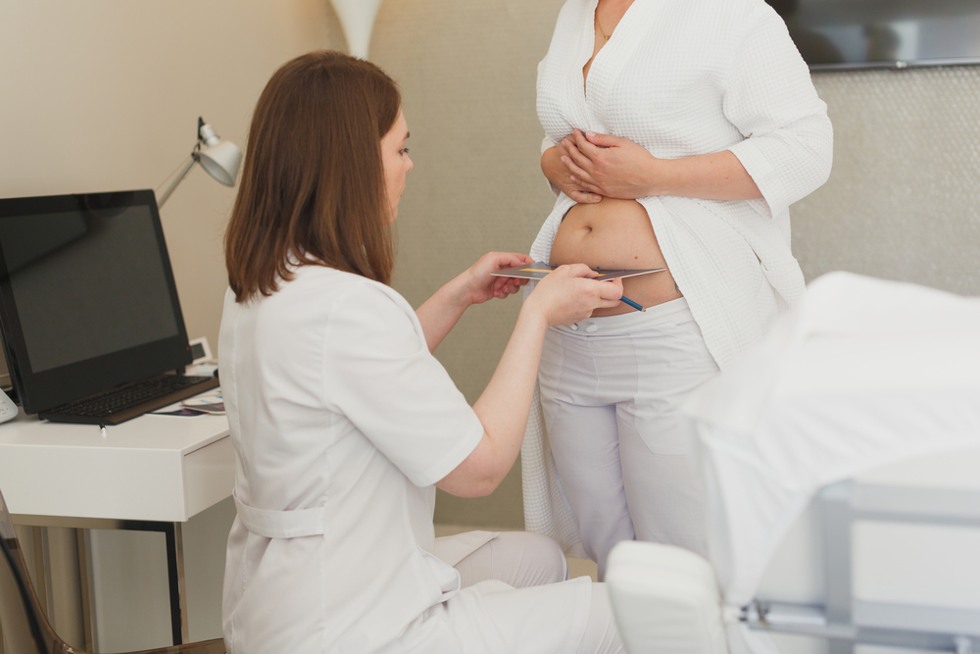
Photo credit: SibFilm / Shutterstock
Abdominoplasty – most commonly referred to as “tummy tuck” – is a cosmetic surgery procedure to improve the shape of the stomach. The aim is to remove excess tummy skin that can't be removed through exercise. Read more about the difference between a full and mini tummy tuck here.
Post-op guidelines
- You will return from surgery with a pressure garment in place, and you must wear this continuously for 6 weeks following surgery, or until directed by your surgeon.
- Pain relief will be prescribed and administered as required.
- There may be some fluid leakage initially following surgery, but do not be alarmed as this is normal.
- You will have a wound check before 7 and 14, to assess healing and remove any stitches that aren’t dissolvable.
- You are not able to drive for 2 weeks following surgery.
- If you find your stomach has increased pain, heat, excessive swelling or if you begin to experience symptoms such as high temperature, contact your nurse immediately.
- You must wear your pressure garment in place until your postoperative appointment.
- Do not get the wound site wet as it may lead to possible wound infection.
- Movements will be restricted for the initial few weeks following surgery, so do not overdo it.
- When getting out of bed, you should do so carefully. Roll onto your side, move to the edge of the bed, swing your legs out to the floor then push up into the sitting position. Do this slowly with support if necessary.
- Do not take any medications containing aspirin 2 weeks following surgery.
- We recommend using a mild laxative for the first two weeks post-surgery, to avoid any unnecessary strain on the wound and to prevent constipation.
- Your abdomen may feel “lumpy” and you may notice a loss of sensation to begin with – this is normal. Your nurse will discuss this with you.
- The abdomen may feel lumpy and there may be a loss of sensation initially – this is perfectly normal, and your nurse will discuss massage and aftercare with you on your follow up appointment.
- Avoid any strenuous exercise or lifting anything heavy for at least 6 weeks following surgery.
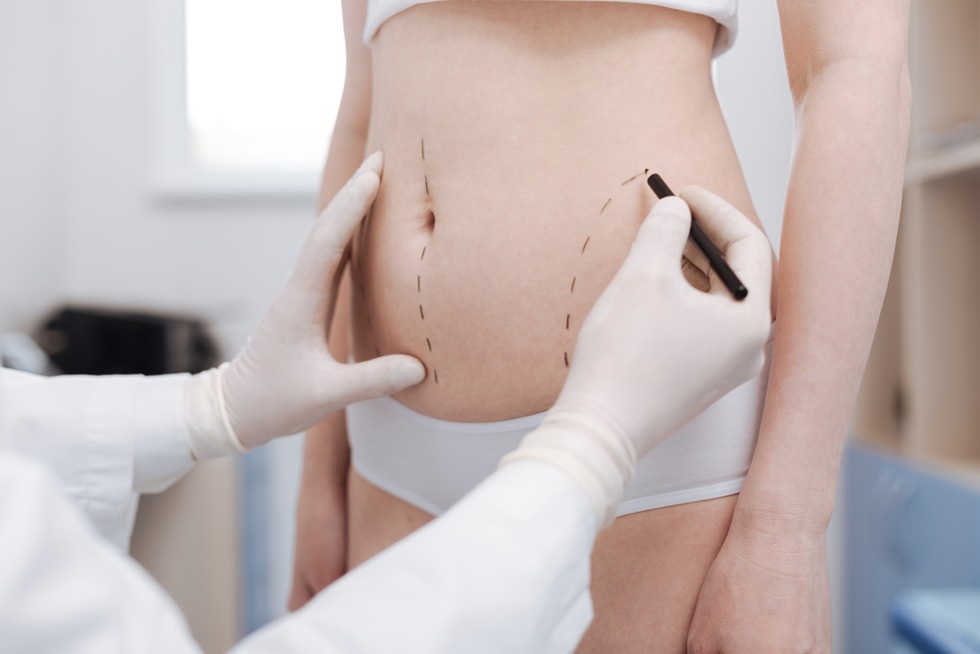
Photo credit: Dmytro Zinkevych / Shutterstock
Liposuction is a cosmetic surgery procedure to remove any unwanted body fat that are hard to lose through exercise and a healthy diet. The operation entails sucking out small areas of fat from areas such as the bum, hips, thighs and stomach in order to alter body shape. The procedure involves breaking up fat cells, making a small incision and inserting a suction tube to loosen fat and suck it out.
Post-op guidelines
- As with Abdominoplasty, you will return from surgery with a compression garment in place, which you must wear until your surgeon instructs you to take it off – usually around 6 weeks.
- You will feel some discomfort – pain relief will be prescribed and administered by your nurse.
- You may find some fluid leakage following surgery, but do not worry as this is normal. However, if you believe anything is out of the ordinary, tell your nurse as soon as possible.
- You should have a wound check at day 7 and 14 to check for any possible problems and to check healing.
- You are not able to drive for 1 week following surgery
- You must not bathe or shower following surgery until instructed to do so by your nurse. Following instruction, you must shower daily and gently massage the treated area. Often, the abdomen may feel “lumpy” and have a lack of sensation at first, massaging can help this. A dry massage may also be instructed by your surgeon or nurse.
- Movements will be restricted for the first few days – it is crucial to not overdo it.
- Do not take any aspirin medication 1 week following surgery.
- Avoid getting the wound wet as this could mean bacteria may form and lead to a possible wound infection.
- Bruising and swelling is perfectly normal. This may continue for around 6 weeks and differs for each individual.
- Avoid any strenuous exercise and lifting anything heavy for the first 6 weeks after surgery.
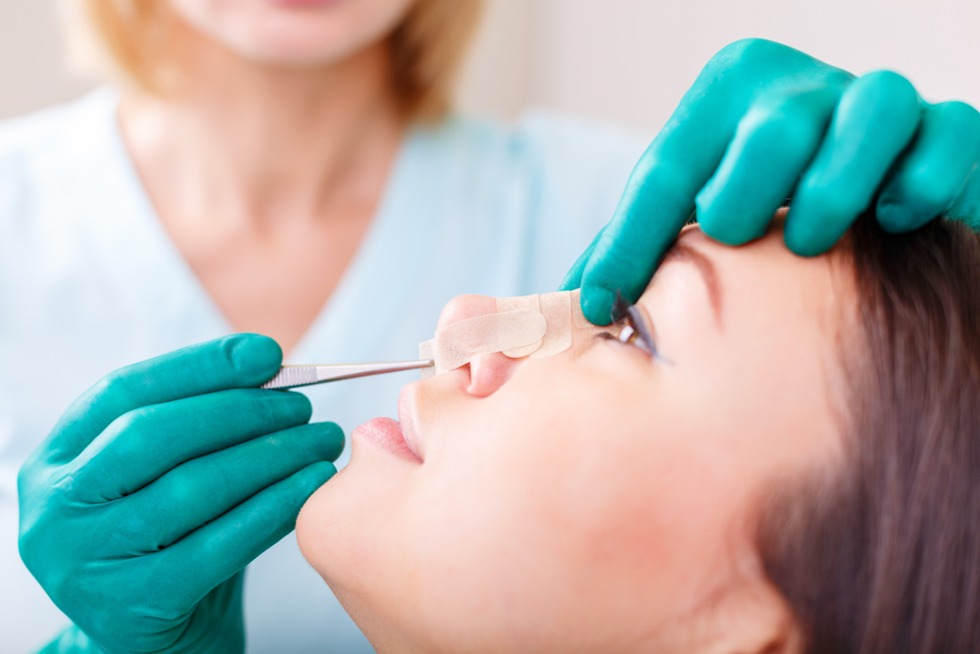
Photo credit: Gerain0812 / Shutterstock
This procedure is an operation to change the shape or size of the patient's nose. The operation entails either making the nose smaller or larger, changing the nose’s shape or the angle between the nose and the tip. This procedure involves making one cut across the skin between the nostrils, or cuts inside the nostrils.
Post-op guidelines
- You will return from surgery with a splint in place, which you must wear continuously until your post-op appointment. If there are any packs in your nose, they will be removed before you leave hospital by a nurse.
- Pain relief will be prescribed for any discomfort.
- You may see some blood spotting initially following the removal of nasal packs, but this is normal. If there is anything pronounced, get in touch with your nurse.
- After a week, your nurse will want to check your nose is healing well.
- You will not be permitted to drive for 1 week following surgery.
- Do not bathe or shower following your surgery, until your nurse allows you to. Keep the area clean and dry – do not splash any water on the facial area.
- Do not get the area wet, to avoid any possible infection developing.
- Breathe through your mouth for the first 7 days – mouth care is very important in this instance.
- Sleep on your back and in an upright position for the first two weeks after your surgery, to allow swelling to go down.
- Your nose may have altered sensation initially, but this is normal. Your nurse will discuss massage and aftercare with you in your appointment.
- Bruising and swelling is perfectly normal and part of the healing process. It may also feel particularly sensitive – regular ice packs will help.
- Do not blow your nose or attempt to dislodge any debris for 2 weeks following surgery.
- Avoid any smoky, dusty or humid environments for the first 2 weeks.
- Avoid strenuous exercise for 6 weeks following surgery.

Photo credit: Africa Studio / Shutterstock
Ear correction surgery, also known as “otoplasty”, is a cosmetic surgery procedure to change the size or shape of the ears or pin the back (also referred to as pinnaplasty). The operation entails making one small cut behind the ear, removing pieces of cartilage, and scoring and stitching the remaining structure of the ear.
Post-op guidelines
- You will return from surgery with compression bandages on your ear. You must wear this until your postoperative appointment.
- You will face some discomfort – your nurses will prescribe and administer pain relief for you.
- There may be some fluid leakage through the compression bandages to begin with, but this is nothing to be alarmed about.
- Your nurse will check the wound around 7 days after your surgery to remove any stitches and to assess healing.
- You cannot drive for one week after surgery.
- Do not bathe or shower above the collar bone until you have had your postoperative appointment – your nurse will give you details about this.
- Do not get the site wet as moist environments are a breeding space for bacteria, which may result in a possible infection.
- Avoid any medication that contains aspirin one week after surgery.
- Sleep on your back in a semi upright position for the first two weeks. It is advisable to wear a sports headband during sleep and whilst lying down until 6 weeks has passed.
- Avoid any strenuous exercise for at least 6 weeks post-surgery.
- No hair dye must be used for 4 weeks following surgery.
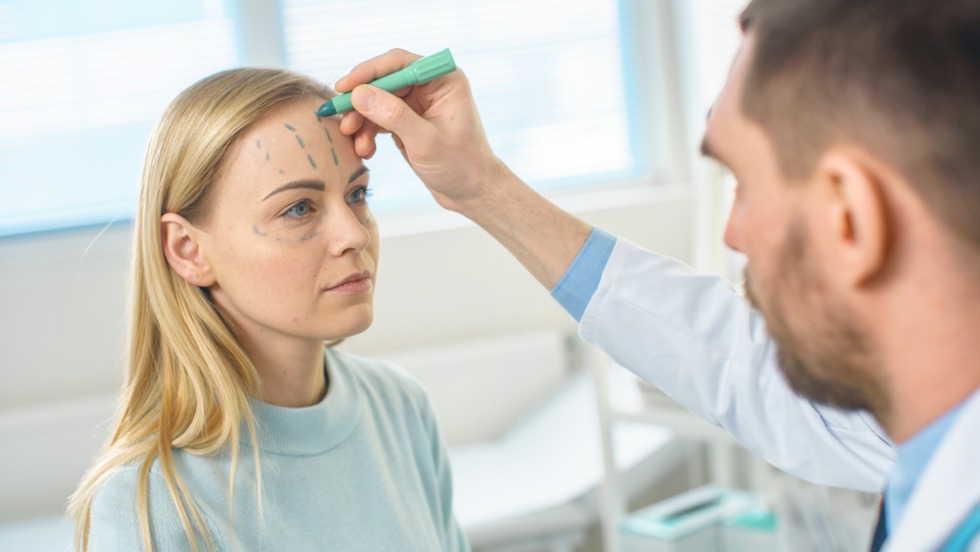
Photo credit: Gorodenkoff / Shutterstock
This procedure is cosmetic surgery to lift and pull back the skin to create a tighter and smoother looking face. The idea is designed to reduce the appearance of sagging skin around the lower half of the face and neck. The operation includes a surgeon making incisions into the temples and under the chin, removing skin and pulling skin backwards and upwards.
Post-op guidelines
- You will return from theatre with bandages around the chin and face. These will be removed prior to leaving hospital and may be replaced with a supporting strap.
- You will feel some discomfort, so take pain relief and use ice packs to relieve any discomfort and reduce swelling.
- There may be some fluid leakage initially – don’t be alarmed, this is normal.
- You should have a follow up appointment 7 days after your surgery to check healing and remove any stiches.
- You should avoid driving for 1 week after the surgery.
- Bruising and swelling with subside gradually over 2 to 3 weeks following your procedure.
- Do not bathe or shower hair or above your collar bone following surgery until instructed to do so by your nurse. Once you have, wash with a mild shampoo and dry thoroughly using a cool heat setting.
- Do not get any wounds wet, as it may lead to an infection.
- You must sleep on your back in a semi-upright position for the first 2 weeks following surgery.
- Do not take any medication containing aspirin one week following your procedure.
- Protect any incisions from sunlight and artificial UV rays for 12 months using an SPF 25+.
- You may feel altered sensation in your face and surrounding areas initially – this is normal.
- Two weeks post-surgery, you might want to consider massaging vitamin E cream into the incision line to promote healing.
- It is advisable to avoid any strenuous exercise or heavy lifting for 6 weeks following surgery.
- Avoid any facial treatments or procedures for 6 weeks following surgery to allow proper healing.
- No hair dye to be used 4 weeks prior and 4 weeks post-surgery.
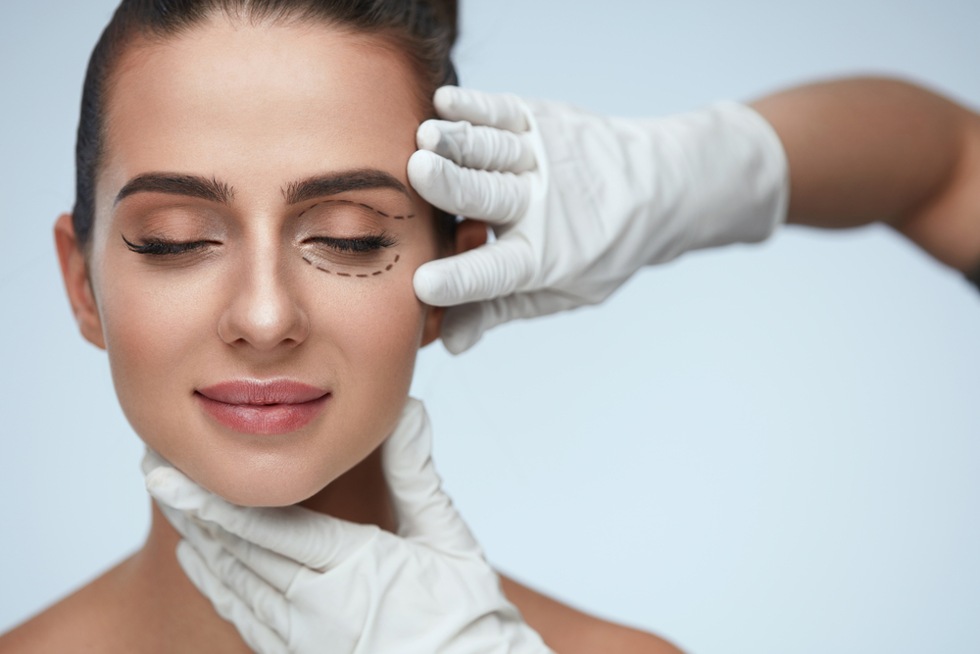
Photo credit: puhhha / Shutterstock
Blepharoplasty, also known as eyelid surgery, is a cosmetic procedure to remove excess skin or fat from the patient’s eyelids. The operation aims to improve hooded or droopy eyelids or eyebags. The procedure entails making a cut along the eyelid crease in the natural skin fold or below the lower lashes, removing the excess skin, fat or muscle, and closing up the incision.
Post-op guidelines
- You may return from theatre with ice packs over your eyes to reduce any initial swelling.
- Pain relief medication will be prescribed by your nurse.
- Your eyes may be bruised and swollen following the surgery and you may experience difficulty with your vision for up to 48 hours post-op.
- You will have a check-up 7 days after your surgery to assess the healing progress.
- You will be unable to drive for up to 1 week following the surgery.
- It is advisable to place ice packs on your eyes frequently to reduce any swelling.
- Do not bathe or shower following the surgery until instructed to do so by the nurse. Getting the area wet increases the chance of an infection.
- Do not watch television or read for the first 48 hours as this can place unnecessary strain on the eyes.
- Avoid smoke and dust as much as possible following surgery.
- Do not take any medication containing aspirin 1 week following surgery.
- Do not wear any makeup until your nurse says you are allowed. This will be once the stitches have been removed.
- Avoid any strenuous activity for the first 4 weeks post-surgery.
- Depending on the technique used by your surgeon, you may need to use a SPF moisturiser daily and wear SPF 25+ when exposed to UV light.
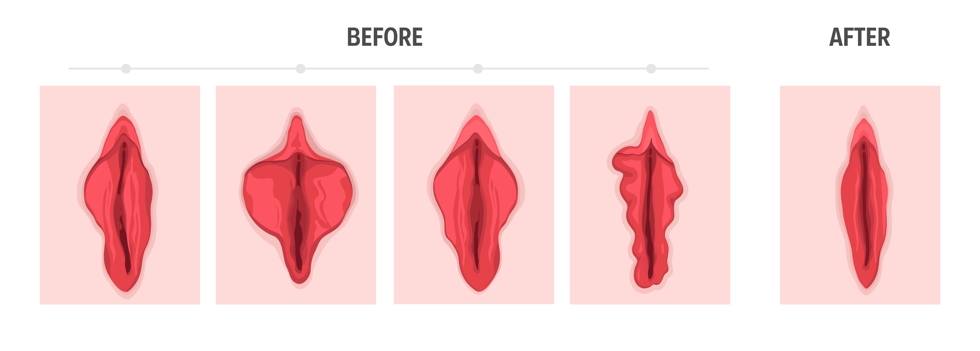
Photo credit: logika600 / Shutterstock
Labiaplasty is a cosmetic procedure to reduce the size of the labia minora – the flaps of skin on either side of the vaginal opening. The operation entails shortening or reshaping the vaginal lips, which involves the unwanted tissue being cut away with a scalpel or laser and being stitched up.
Post-op guidelines
- You will return from theatre with a sanitary pad in place, which you must continue to wear until your postoperative appointment.
- You will feel some discomfort from this procedure. Your nurse will prescribe some pain relief for you.
- You may find you have blood spotting initially after surgery – this is normal. However, anything pronounced should be brought to the attention of the clinic.
- You will have a wound check after 7 days to remove any stitches and assess healing.
- You cannot drive for 1 week following surgery.
- You must shower twice daily upon your discharge from hospital. Do not use soap directly on the area for the first 7 days.
- Try to keep the area dry, to avoid any possible infections occurring.
- You should drink between 2 to 3 litres of water for the first 2 weeks following surgery.
- Avoid thongs for 6 weeks post-surgery.
- Do not take medication containing aspirin for the first week.
- It is recommended to use a mild laxative for the first 2 weeks following surgery to avoid placing unnecessary strain on the wound.
- Avoid any sexual activity for at least 6 weeks post-op, as well as tampons.
- Avoid any strenuous exercise for 6 weeks following surgery.
Photo credit: JPC-PROD / Shutterstock
Sclerotherapy is an often considered a cosmetic procedure to improve the appearance of “spider” or varicose veins. The procedure entails injecting a solution into the vein, which causes blood to re-route through healthier veins. The collapsed vein is re-absorbed into tissue and eventually fades within a few weeks.
Post-op guidelines
- After this, you must wear compression stockings for the first 48 hours, and then just during day time for the next 3 to 5 days, unless your nurse tells you any different.
- You may see some redness, swelling and mild itching following your treatment, but this gets better within 24 to 48 hours. You can avoid this by taking antihistamine tablets.
- Avoid hot baths for 2 days, or until the redness and swelling decreases.
- It is advisable to apply Aloe Vera gel to the legs to reduce redness and warmth in the skin. Continue with usage until the redness fades.
- Avoid any creams, oils, irritants and perfumed products for 2 days, at least.
- Avoid extremes of hot or cold for the first few days.
- Avoid excessive exercise for 5 days to ensure proper healing.
- Veins may appear worse at first, but there should be a vast change once they have healed.
- Bruising is common in the treatment area.
- Avoid UV exposure altogether on the treatment area for at least 4 weeks – longer if possible.
- Some patients may need a minimum of 3 treatments which are spaced between 6 to 8 weeks apart. In more severe cases, a further 1 or 2 treatments may be needed.
